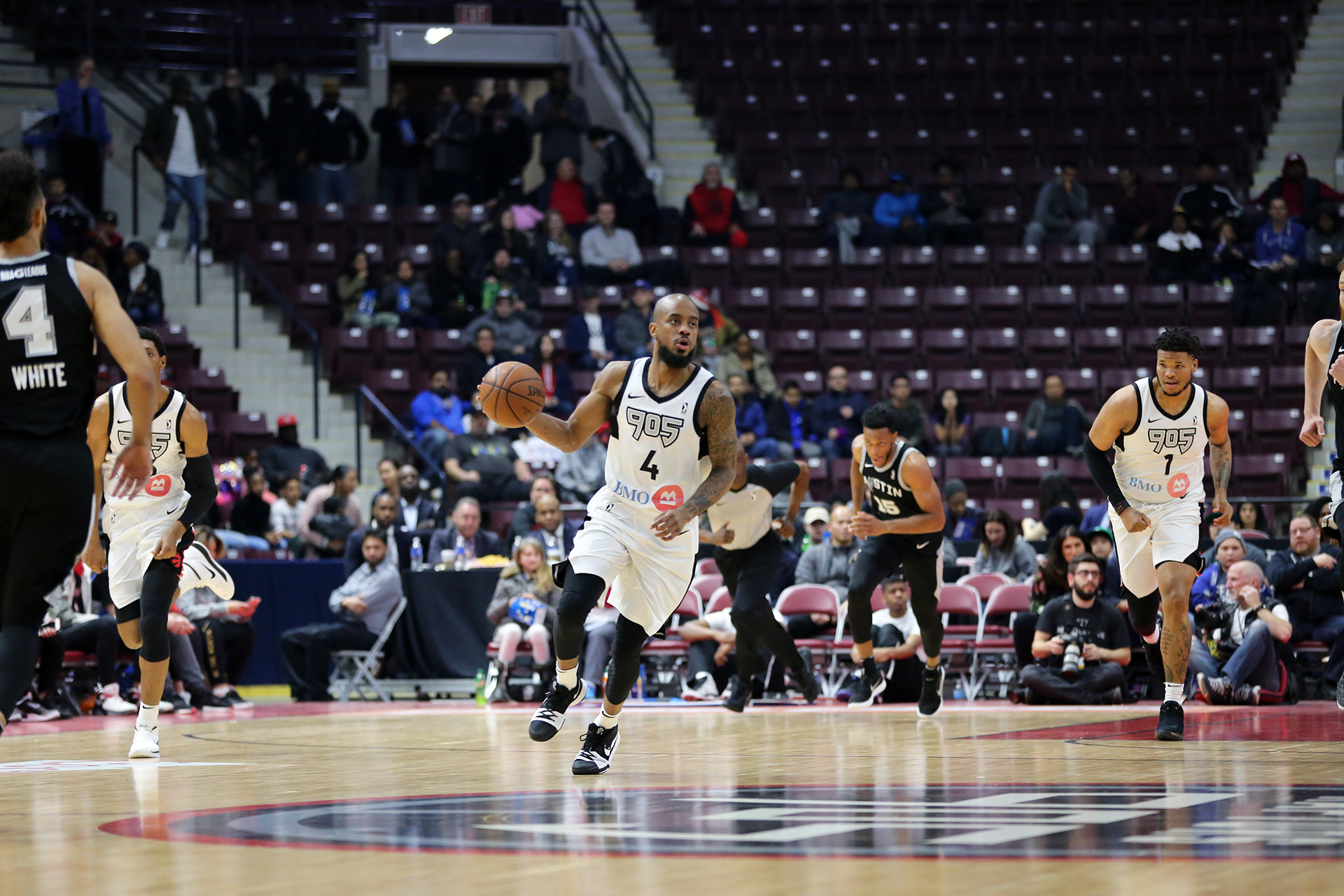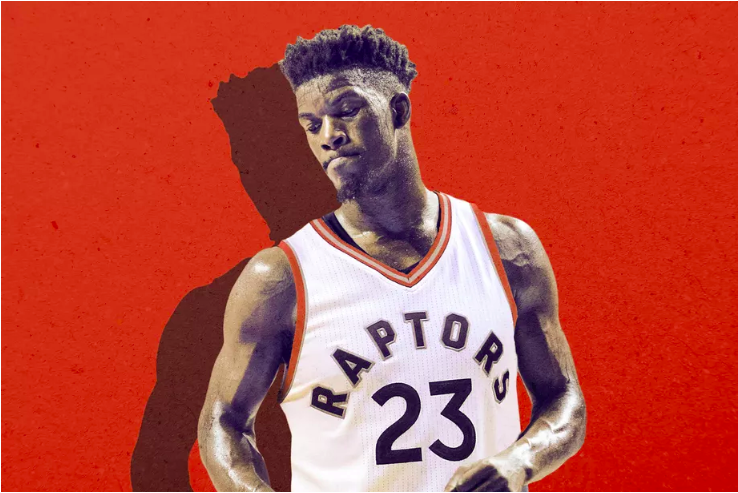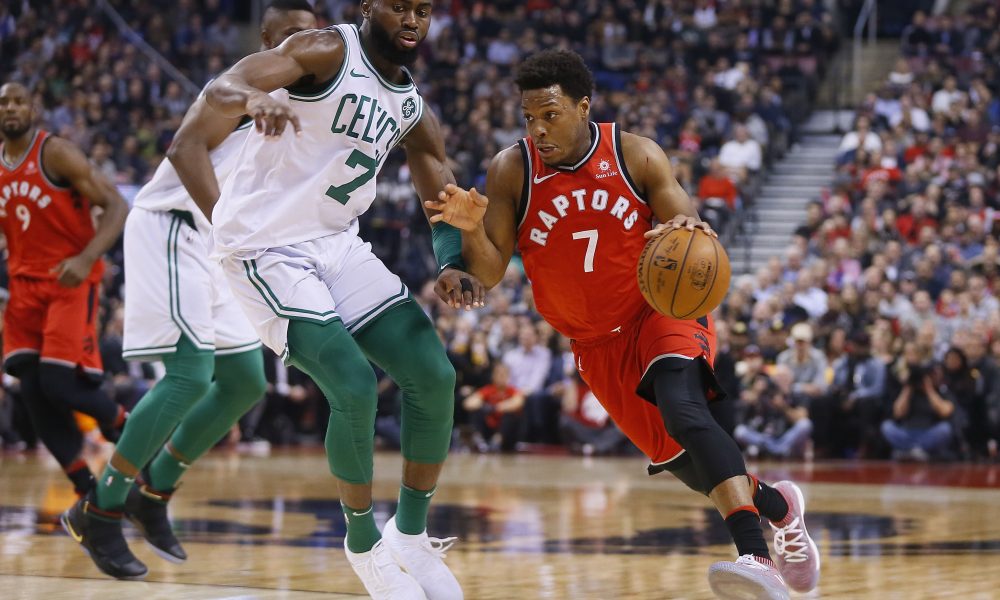You can keep up with all of our player previews here.
Though several media members were surprised by Lorenzo Brown’s partially guaranteed deal with the Raptors, he makes some sense as a depth piece at the end of the bench. Brown could still be cut by the end of camp and lose his roster spot to a camp invite – more on them coming later in the day – but Brown has the inside track on a contract with the Raptors.
He proved far too dominant for the G-League, leading the Raptors 905 to another finals appearance, dominating at will in the pick-and-roll, and winning MVP in the process. A player like that should be able to play spot minutes in the NBA without causing too much damage. However, his skills never transitioned to the NBA, and he plays at a position of strength for the team. With three elite point guard pick-and-roll practitioners in Kyle Lowry, Fred Van Vleet, and Delon Wright, combined with a wing who will certainly earn reps in the spot in Kawhi Leonard, there doesn’t seem to be much room for Brown to run the offence. Can he provide anything else?
Brown’s presence on the court impacts a team’s minimum shot quality more than its maximum. At least in the G-League, he could manufacture a league-average or better shot out of thin air. That was important for a 905 team that was short on shot creation and shooting. For the 905, he had a masterful sense of help defence and was incredibly patient. He has a terrific midrange jumper, either pullup or step-back. He also has an elite bounce pass to the roller combined with a very good skip pass to shooters anywhere on the court; he led the G-League in assist percentage, with 43.4.
None of that seemed to transition to the NBA. Brown never functioned as lead initiator for the Raptors, always playing as the shooting guard next to Van Vleet, Lowry, or Wright. His range didn’t extend to the arc in the G-League, let alone the NBA; he only attempted 12 NBA triples last year and made two of them. In fact, he was so unwilling to shoot that over the span of seven games in November and December, he attempted seven measly shots while frequently passing up open looks to reset the offence.
Brown is not yet a great finisher. He had trouble finishing over length in the G-League, where 7-footers are a rarity. His scoop shots, distance finger-rolls, and floaters are not NBA-caliber skills. He doesn’t possess terrific bounce around the rim, where he was blocked more than would be ideal. Brown will have trouble in the paint in the NBA.
Much of why Brown’s passing hasn’t translated is because he has never been a decisive player. His patience was a virtue for the 905, as he could run a play, see how the defence reacted, reset, and run the same play knowing what the defence would do. In the NBA he does not have the leash to take so much time off the clock. The offence will be best served by him moving the rock quickly. If he’ll ever blend in as an off-guard or even wing, he needs to make immediate decisions, which is a key trait for any high-impact role player.
The Raptors’ offence struggled when Brown played. That is partially due to the fact that he rarely played beside the Raptors’ best players. It’s also because he is a net negative on offence. Whether an offence can survive his presence on the court is not a solved riddle. If Brown doesn’t improve on his shooting, finishing, and the speed of his decision making, he will be unplayable on offence. He’ll need to improve on all three to become an offensive positive.
Where Brown did thrive was on defence. At 6-foot-5, Brown has the size to bother any point guard. He has a solid grasp of positioning and angles, quick feet, and incredible hands. Every year in the NBA, he’s been in the 75th percentile or higher for steal rate, per Cleaning the Glass. He legitimately bothered Goran Dragic in January when no one else on the roster was up to the challenge.
Partially as a result of Brown’s defensive ability, the Raptors were 15.2 points per 100 possessions better on that end of the court when Brown was in the game. Opponents shot 13.8 percent fewer threes, which all turned into long 2-pointers. Those are outrageous numbers, and certainly due to a small sample size (he only played 107 minutes), but they do offer some insights. Namely, Brown can be part of an elite NBA defence. That alone will earn him spot minutes during the season.
Context is perhaps the most important thing for a G-Leaguer to make the jump to the NBA. Almost any G-League star could succeed in the NBA given the right situation. Brown is certainly too good for the G-League, but his skills require a difficult context to fit into the upper level.
Brown will likely play another 100-odd minutes during the upcoming season. He is a solid injury replacement. He won’t hijack an offence and take shots outside of his comfort zone (or inside of his comfort zone, which, again, is something of an issue). He needs to be willing to shoot open shots, play faster, and extend his range. That’s a lot of ifs. However, he’ll play elite defence. Coaches love that.
All players at the end of the bench come with trade-offs. For Brown, those are apparent and known. The man is already 28-years-old; any improvements will come incrementally. Brown earned his NBA contract, and the Raptors know what they’re getting. Don’t expect Brown to steal playing time from any of the point guards ahead of him, and he should absolutely not be on the court during the playoffs. But he’s a sure thing with a few NBA-level skills. At the end of the bench, that’s enough.



